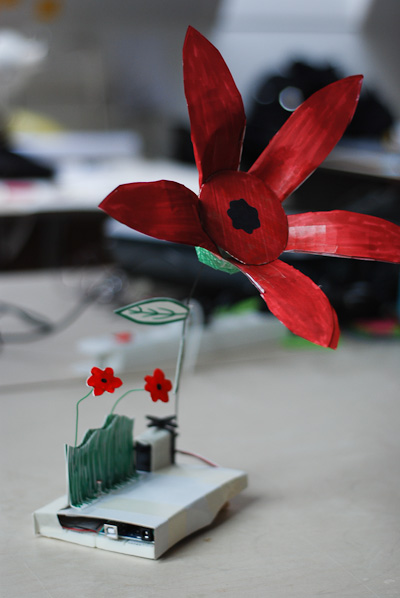Prototyping with Arduino
The first two weeks in November at CIID we had the Physical Computing course, taught by Massimo Banzi, co-creator of Arduino and co-founder of Tinker.it. The goal of the course was to learn how to prototype interactive concepts. Arduino is a platform conceived for this purpose – approaches electronics to designers, reduces development time, adds flexibility to the design process and allows more frequent validations. It has become the tool for testing and showing functional prototypes to clients.
The first week we learnt how to use Arduino (both the hardware and the software), types of sensors and the basics of electronics.
Massimo explained also the importance of the community around the Arduino platform. The open-source attitude is key for spreading the knowledge and build over already explored areas. Massimo invited people with more experience to help others with less tinkering abilities, but learning from their fresh ideas, sometimes less conditioned by technical feasibility.
I had some previous experience with Arduino, but this course gave me the skills to quickly prototype ideas. The first week we developed three small projects, ranging from 2 hours to 1,5 days. We start learning by playing; we were asked to design a controller for a game made with Processing. I used push buttons for up&down control, and tilt sensors for left&right.
I developed another project with Li Bian, a flower that tends to orient toward the light. You can see a video here.
It was a pleasure to learn, and work side by side with Massimo. Is like having Steve Jobs explaining you how to use the iPhone or Ferran Adrià teaching how to make “pà amb tomàquet“.
Tags: arduino, massimo_banzi


